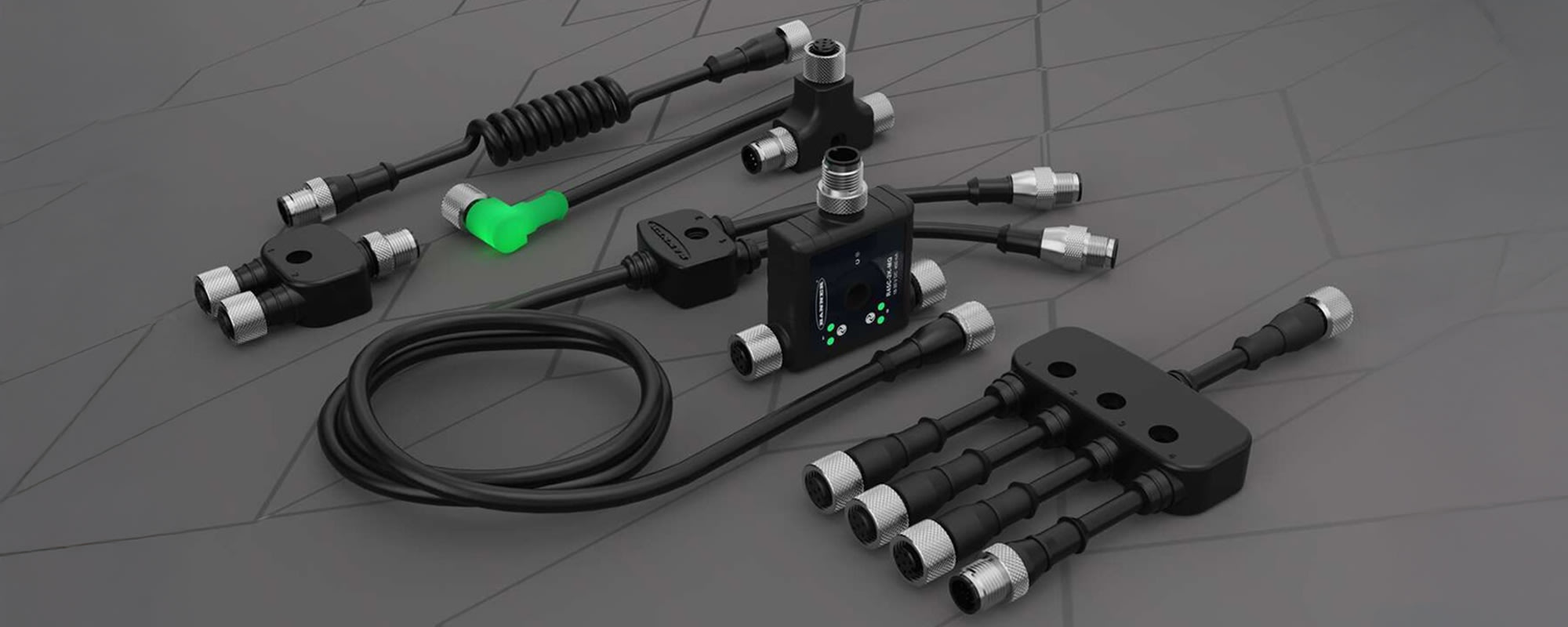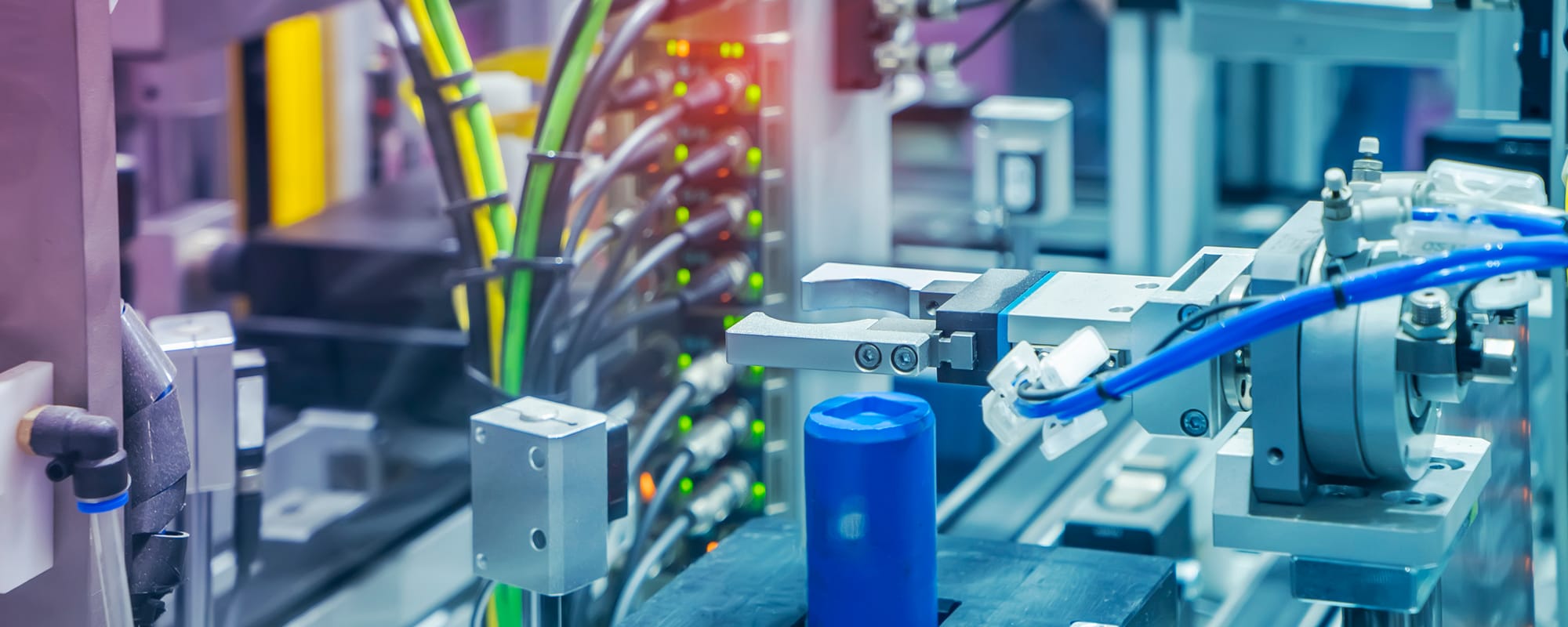The industrial market is experiencing a digital transformation catalyzed by Industry 4.0 trends and technologies, the benefits of which are helping organizations in every industrial sector overcome pervasive market challenges, including downtime, skilled labor shortages, and inefficiencies. Learn more about these challenges and solutions, how they’re impacting the rapidly evolving energy and utilities sector, and the products essential to making ambitious modernization goals with impending deadlines a reality in this three-part series.
Mark Russell, Technical Application Support Manager, RS
In this first installation of our three-part series, you’ll learn about the Industry 4.0 trends and technologies helping industrial market sectors eliminate unplanned downtime, overcome skilled labor shortages, and improve operational and energy efficiency.
The Digital Transformation of the Industrial Market
The digital transformation catalyzed by Industry 4.0 trends and technologies — including electrification, digitalization, automation, remote condition monitoring, and predictive maintenance on the trends side and ranging from IIoT networks to asset management solutions and cloud and edge computing on the technology side — has really hit its stride. These once-novel smart solutions are now delivering real value in virtually every industrial market segment due to the slew of optimization, efficiency, productivity, quality, safety, and profitability improvements they provide and the overarching industry challenges — ranging from downtime and skilled labor shortages to inefficiencies — that they help organizations overcome.
Automation technology is now fairly mature and has successfully spread throughout much of the industrial market. Now, the accuracy and efficiency improvements that automated systems have long been renowned for are being supercharged by Industry 4.0 technologies designed to capitalize on today’s high-speed connectivity capabilities. For example, the combination of IIoT sensors, asset management devices, and cloud and edge computing technologies allows industrial organizations to facilitate communication between vast arrays of networked equipment and devices, collect and analyze detailed process and performance data from each, automatically act on that information, and continually optimize their performance and processes. Leveraging these advanced Industry 4.0 technologies improves the efficiency, productivity, quality, and safety of new and existing automated processes. It also enables organizations to enact condition monitoring and predictive maintenance strategies that virtually eliminate unplanned downtime, which is a hugely impactful obstacle in industrial markets. Additionally, remote condition monitoring and maintenance strategies help organizations overcome persistent skilled labor shortages.

Industrial Market Challenge: Unplanned Downtime
The average manufacturer experiences 800 hours of equipment downtime a year, which equates to more than 15 hours per week and, according to Siemens, costs industrial organizations almost $1.5 trillion a year — roughly 50% more than it did in 2019–2020 ($864 billion/year) — due to spiraling inflation and production lines running at higher capacities. However, the recent “Value of Reliability” survey conducted by Sapio Research in partnership with ABB, revealed that, while more than two-thirds of industrial organizations experience unplanned downtime at least once a month at a cost of roughly $125,000 an hour, 21% of the businesses surveyed still rely on run-to-fail maintenance, even though myriad, field-proven Industry 4.0 technologies demonstrated to enable condition monitoring and predictive maintenance strategies and deliver significant efficiency, productivity, safety, and cost improvements — including IIoT sensors, asset management devices, and edge and cloud computing systems — are readily available.
In fact, according to McKinsey, the efficiency and productivity improvements enabled by IIoT technology alone is expected to result in economic impacts of $1.2 to $3.7 trillion a year by 2025, much of which can be attributed to the preventative maintenance strategies that IIoT technologies enable since, according to Deloitte, these efforts have been proven to reduce unplanned downtime by up to 70% and maintenance costs by up to 25%. IIoT technologies like sensors and asset management devices can also be used to improve the energy efficiency of connected systems, equipment, and machinery and, in turn, help industrial organizations mitigate costs and work towards sustainability goals. As such, supply chain leaders are increasingly interested in leveraging these and other Industry 4.0 technologies to automate repetitive tasks, increase operational efficiency, and improve production and delivery speeds.
Industrial Market Challenge: Skilled Labor Shortages
Skilled labor shortages are another pervasive challenge for industrial market segments that can be solved in part by leveraging Industry 4.0 trends and technologies.
According to a study by Deloitte and The Manufacturing Institute, the manufacturing skills gap in the U.S. is projected to result in 2.1 million unfilled jobs by 2030, which could cost the industry more than $1 trillion in 2030 alone. Understaffed industrial operations often struggle to meet efficiency, productivity, safety, and profitability goals, and their inadequate fulfillment can have especially negative impacts in industrial sectors with hazardous environments and far-flung facilities, including the energy and utilities sector. Industry 4.0 technologies — including automated systems, IIoT networks, asset management devices, and remote condition monitoring equipment — can help.
For example, in hazardous environments like power plants and sprawling environments like solar energy installations, robust IIoT networks that facilitate communication between all connected systems, equipment, and devices combined with asset management devices and remote condition monitoring equipment can help prevent onsite employees from the time-intensive burden of and increased safety risks associated with having to manually inspect equipment while also virtually eliminating unplanned downtime. And if these applications are also equipped with automated systems, these smart solutions can even prevent onsite employees from having to make manual adjustments to equipment and processes. Regardless, industrial operations that employ Industry 4.0 technologies like these free onsite employees up for more challenging strategy, planning, and complex reasoning tasks and help improve overall efficiency, productivity, and safety even in the midst of enduring skilled labor shortages.
Dive Deeper
In the second installation of our three-part series, “Overcoming Industrial Market Challenges With Industry 4.0 – Part 2: Spotlight on the Energy and Utilities Sector,” you’ll learn about the impact of Industry 4.0 trends and technologies on the energy and utilities sector and its ambitious modernization goals.







